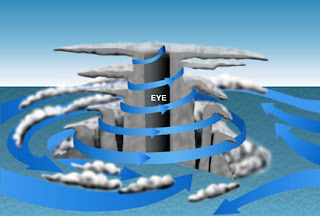Refrigerator's Air Circulation and Humidity
The refrigerator relies on forced air to transfer heat. Fans inside the appliance move air around. The faster the air flows, the more quickly the heat is removed. For this reason, you don't want to do anything to block the airflow. There are three basic types of forced-air systems in refrigerators. In ceiling-type refrigeration,
a single fan is mounted on the ceiling of the appliance. This is adequate for small-volume interiors but is not used in larger refrigerators. Because it only has a single location, it might allow for hot spots in the corners of the interior cabinet. Back-wall or mullion-type refrigeration, the airflow system takes in air above the top shelf and discharges it below the bottom shelf.
Refrigerator's Air Circulation and Humidity
Refrigerator's Air Circulation and Humidity
Refrigerator's Air Circulation and Humidity
Refrigerator's Air Circulation and Humidity
The duct-type refrigeration system is a combination of thefirst two types. Here, the forced-air unit is located at or above ceiling level, and the air is circulated through a series of small air vented reflex ducts.†sounds to various spots on the back wall of the cabinet. Just how important is air circulation? Well, the difference between safe and unsafe raw foods can be as little as five to seven degrees Fahrenheit. Seafood, poultry, red meats or will spoil within 18 to 24 hours if their refrigerated temperature rises above 45 degrees to 42
Fahrenheit, and you already know the HACCP guideline of temperatures no higher than 40 degrees Fahrenheit. Would you rather risk a lawsuit and the resulting negative publicity from food-poisoning allegations, or keep your refrigerator air circulating properly?
Fahrenheit, and you already know the HACCP guideline of temperatures no higher than 40 degrees Fahrenheit. Would you rather risk a lawsuit and the resulting negative publicity from food-poisoning allegations, or keep your refrigerator air circulating properly?
Humidity is the amount of moisture (water vapor)in the air. At different temperatures, air can hold different amounts of water. In refrigeration, the type of humidity we are interested in is the relative humidity, or how much of its maximum water holding capacity-the air contains at any given time, expressed as a percentage. For example, 85 percent humidity indicates that the air is holding 85 percent as much water as it could hold at that temperature. Relative humidity greatly affects the appearance and rate of deterioration of many foods. If the air surrounding the stored foods has a very low relative humidity, for instance, the air naturally picks up moisture from the foods themselves, causing surface discoloration, cracking, and drying.
If the air has a relative humidity high, some of the moisture will condense on food thatis supposed to be kept dry, causing it to soften or grow mold or bacteria. Fortunately, most foods do well in a relative humidity of 80 to 85 percent. To achieve this optimum level, manufacturers are concerned that the refrigerator's evaporator coils be large enough to operate at a temperature a few degrees lower than the desired temperature of the appliance. This differential reduces the amount of moisture that accumulates on the evaporator coils and keeps the moisture in the cabinet of the refrigerator instead. If the coils ' temperatures becomes too low, however, the moisture will turn to ice crystals and get stuck on
the coils.
the coils.
In this case, airflow through the system is blocked and the moisture in the refrigerated space is business. As you can see, getting all the factorsright is a delicate balance, with your food costs and food quality at stake. In short, it is difficult to keep frost off the coils but necessary to keep them frost-free so they will operate properly. Adding heat to the area to defrost the coils, can compromise the temperature of the food inside. A fairly new concept from Hussman Modular Defrost of Bridgeton, Missouri does just what its name indicates: defrosts the coils in sections. The automated system defrosts coils at no more than nine minutes, and never for section defrosts adjacent sections at the same time, all programmed by an electronic controller capable of running up to six walk-ins.
The idea works for walk-in and reach-in refrigerators freezersbut not. It maintains food quality and saves energy by keeping thecompressors from working overtime to compensate for frozen coils. Another suggestion for humidity control inside refrigerated space was pioneered refractive by Humitech International Group, Inc. of Dallas, Texas. Humitech uses a mineral product called sorbite to absorb moisture and odors.
We mentioned most foods do well at 80 to 85 percent relative humidity, but fresh fruits and vegetables are exceptions. They require more humidity up to 95 percent. To increase moisture content, you can slow down the air circulation. This explains why there are separate, closed produces bins in most refrigerators to hold in natural moisture from the vegetables and to restrict airflow.
Refrigerator's Air Circulation and Humidity
